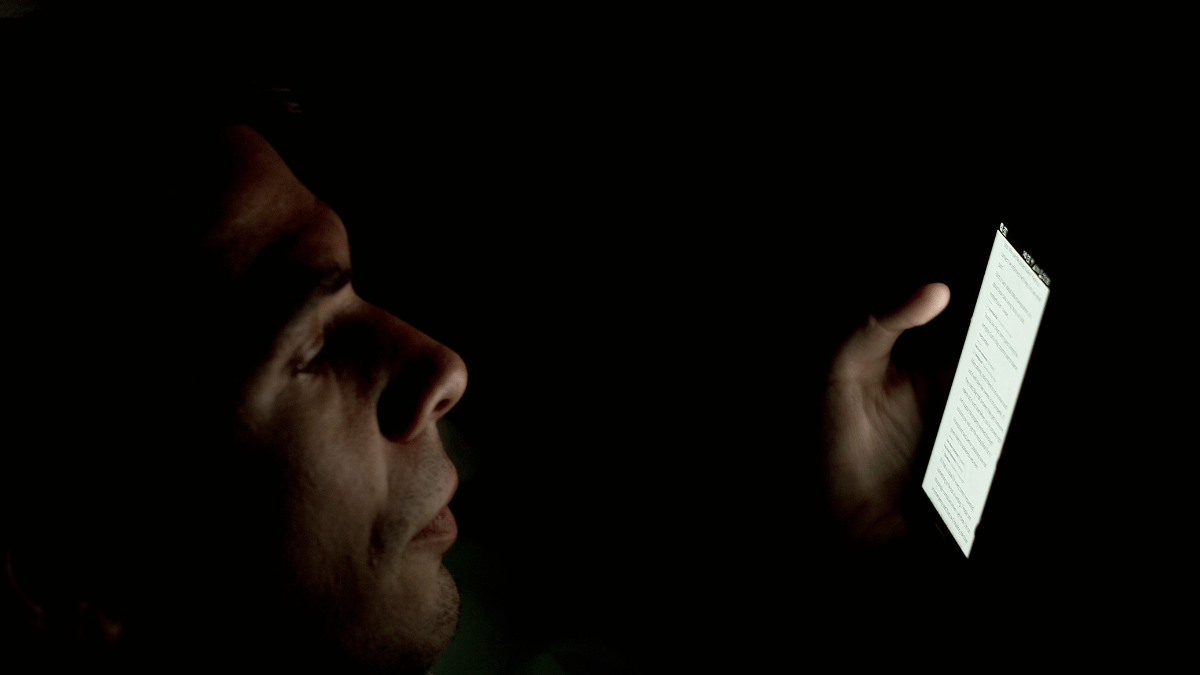If you ever said – let me just see that one last email before I sleep or that one last video and realise its way past bedtime – well, you’re not alone, friend! These days, I have been paying a bit more attention to how my body responds to that late-night screen light. Even a quick peek at the phone, tricks my brain into thinking the day isnt done yet, and sleep slips away.
We spend more time than ever under the quiet glow of our screens. Phones, tablets, and laptops have become evening companions, lighting up messages, shows, and scrolling before bed. Most people have heard that the blue light from these screens can “damage” the eyes. It sounds serious, almost alarming. Yet, science tells a calmer story. The concern isn’t your eyes wearing out – it’s your body’s rhythm getting confused.
Blue light itself isn’t a villain. During the day, sunlight’s blue wavelengths help you stay focused and alert. They’re part of your natural biological clock, aligning your brain with daytime energy and activity. But at night, the same kind of light sends a mixed signal. It tells your body that the day isn’t over yet. The consequence is subtle yet powerful: your brain delays the release of melatonin, the hormone that cues you to wind down and prepare for sleep.
Understanding the Body’s Light Sensor
Your eyes do more than see; they also help regulate your internal clock. When blue light enters the retina, it activates specialized receptors connected to the brain’s sleep center. These receptors keep melatonin in check when it’s bright out. That’s perfect for daytime productivity but confusing when it happens at 10 p.m., while you’re looking at your phone in bed.
This suppression of melatonin doesn’t cause permanent eye injury, according to current research. Studies show little evidence that everyday exposure from screens can harm the retina in healthy adults. What it reliably affects, though, is your sleep timing and quality. Less melatonin means more wakefulness, more difficulty falling asleep, and often, a restless night that leaves you groggy the next morning.
Timing Your Screen Habits to Your Natural Rhythm
The simplest way to protect your rest isn’t through expensive glasses or complex filters – it’s through timing. The body’s circadian rhythm naturally starts producing melatonin about two hours before bedtime. That’s the window where light exposure matters most. If you can limit bright screens during that period, you’re allowing your hormones to keep their quiet rhythm.
For those who need evening screen time – perhaps catching up on work, listening to a podcast, or watching a show – dim the screen brightness and shift to a warmer tone setting. Most devices have built-in “Night Mode” or “Bedtime” features that reduce blue wavelengths while keeping your display visible. Try activating these about an hour before your typical bedtime. Over time, your body will learn to associate this warmer light with the start of rest.
For people working late or studying across different time zones, practical consistency is key. If you can’t avoid screens, wearing amber-tinted glasses in the last hour before bed can slightly reduce blue light exposure. The goal isn’t to ban screens entirely, but to give your body clearer signals of when the day is ending.
How the Habit Supports Sleep, Mood, and Energy
Your sleep cycle is closely tied to your hormones and your gut-brain network. When melatonin drops, cortisol, the alertness hormone, stays higher for longer. This imbalance can ripple through your metabolism, digestion, and mood. Many people who struggle with late-night screen time also report morning sluggishness, sugar cravings, or anxiety that feels hard to shake.
Good sleep restores gut function too. While you rest, the body carries out immune regulation and cellular repair. Melatonin interacts with the microbiome, helping intestinal bacteria reset their own daily rhythms. Skipping deep sleep can delay this process, leading to sluggish digestion or lower resilience against stress. So when you reduce blue light exposure before bed, you’re not just improving sleep – you’re supporting metabolic balance, mood stability, and gentle hormonal harmony.
A Practical Guide to Healthier Evenings
Start simple. Decide on a cut-off time, ideally one hour before bed, where screens begin to dim. Instead of endless scrolling, switch to quieter evening rituals that cue your body toward rest – reading a book, journaling, stretching, or making herbal tea. If you use your phone as an alarm, lower brightness and place it face down a few feet away from your pillow.
If you enjoy winding down with a show, try watching under softer, indirect light instead of pitch darkness. Your eyes will strain less, and your brain will sense a gentler transition from wake to rest.
For a low-cost addition, many people find success using warm-hued bedside lamps or candlelight to mark the shift toward nighttime. Small sensory changes – a cozy light, slower breathing, or calming scents – amplify melatonin’s signal that it’s time to sleep.
Most people can adopt these habits safely, but those with diagnosed sleep disorders or delayed sleep phase syndrome should consult a healthcare provider for personalized guidance. If you notice persistent insomnia or morning fatigue even after reducing blue light, deeper causes such as stress, caffeine, or hormonal imbalance may also need attention.
Blue light doesn’t quietly damage your eyes or erase your vision over time. What it does – reliably and predictably – is pause your body’s natural bedtime biology. That makes it worth noticing, not fearing. The modern daily rhythm still allows room for healthful screen use, as long as we honor the body’s need for darkness and calm before rest.
Think of this habit not as restriction, but restoration. By dimming screens and easing into softer light each evening, you help your body remember what night feels like – slow, quiet, ready for renewal. Over weeks, these calm choices become their own rhythm, anchoring better sleep, steadier energy, and a feeling of balance that fits naturally with everyday life.

